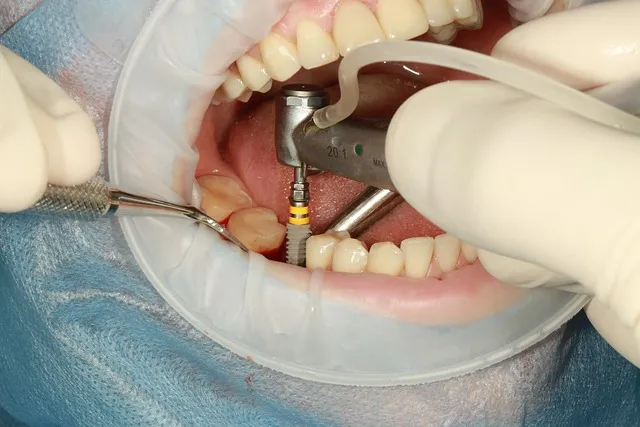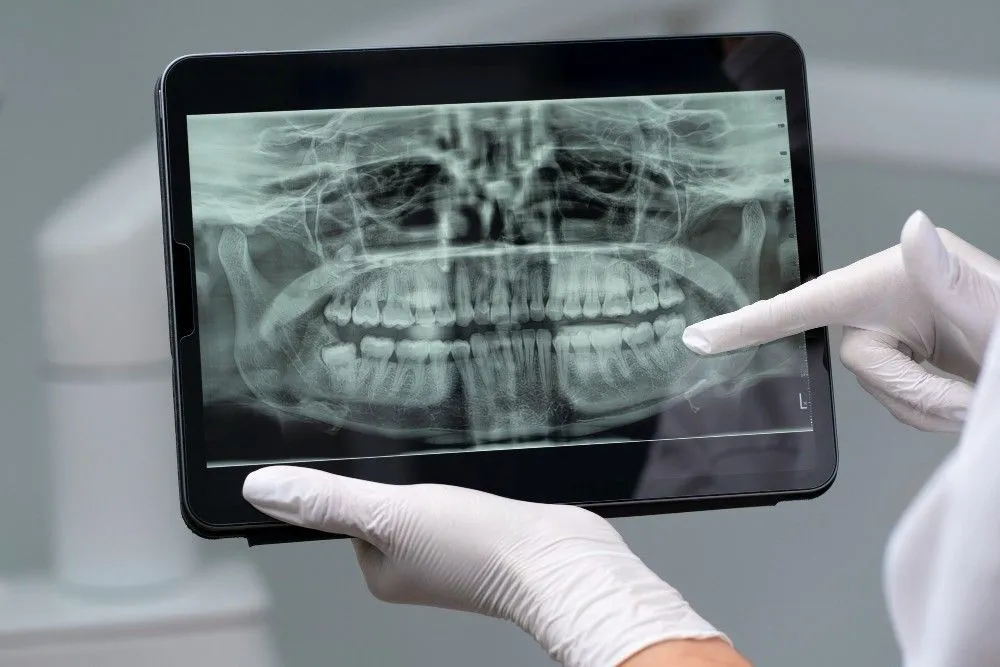Planning to get your wisdom teeth removed? That's easy and quick with anesthesia, but figuring out what to eat after wisdom teeth removal surgery can be more challenging. With your mouth sore and painful and your everyday appetite good, it's crucial to choose the foods that are soothing and gentle, and also ease healing. This blog will guide you on smart and safe eating after surgery. Let's explore!
Why Diet Matters After Wisdom Teeth Removal?
After the removal of wisdom teeth, the extraction site is prone to damage or irritation, and the gums will start healing. So, if you make the wrong food choice, it can delay the recovery process and even disrupt the blood clot that starts forming over the wound. Hence, soft and nutrient-dense foods are required during the time of recovery.
What to Eat After Wisdom Teeth Removal?
Here is a list of the best foods for wisdom teeth recovery:
1. Condensed Milk Ice Cream
To reduce the gum swelling and inflammation that emerge after the surgery, eating ice cream within the first 24 hours can relieve these symptoms.
Strawberry and vanilla-flavored ice cream are most recommended because they contain the essence for building and stabilizing root canals.
2. Oatmeal
Oatmeal with milk is another option that aids in relaxing the gums of wisdom teeth that have been extracted.
Eating oatmeal helps to secrete salivary juice in the oral cavity, which helps numb the pain.
3. Scrambled eggs
Scrambled eggs are soft and moist and can be directly dissolved into our body's gut.
It helps to relax the nerve lining of the gums by giving a lukewarm feeling.
4. Mashed Potatoes
One of the most recommended mashed foods after extraction, which can help relieve pain by applying vapors from food to the oral cavity.
Moreover, eating the potatoes with a pinch of salt can reduce the pain due to the antiseptic properties of salt.
5. Steamed Carrots
These carrots are easy to chew and are nutrient-rich, which eases healing, and also act like natural toothbrushes and provide help in dental care as well.
Moreover, the protein in carrots aids in the maintenance of the lower and upper jaws by providing strength to the teeth and gums.
6. Milkshakes and Smoothies
Drinking milkshakes and smoothies helps prevent any sensitive itching function after surgery and aids in numbing the gums (as they contain a large amount of sugar).
They act like ice cream because it is served cold, and coldness is also useful for relieving pain.
7. Gelatine Products -
Jelly or gelatin products have amino acids and collagen that help build a strong muscular oral cavity. Eating them within 24 hours soothes the muscles of the gums.
They also help in providing a fresh feeling and coldness, assisting in relieving pain.
8. Applesauce
Applesauce is in a pureed texture, which makes it so soft that it is swallowed easily.
Also, it contains essential nutrients such as vitamin C and dietary fiber, which make the jawline stable and healthy.
9. Steamed Rice
Soft and steamed rice is usually the first meal to be eaten, mainly by children.
Rice helps soak up the extra saliva secreted through the oral cavity, which helps in the relaxation of muscles in the gums.
10. Cottage Cheese
This milk product contains a high amount of calcium, vitamin C & D, and phosphorus, which helps in building the health of bones and enamel that is present on the surface of the teeth.
Also, it can be beneficial for those people who are suffering from a vitamin deficiency and low enamel production.
11. Soups and Broths
Drinking hot (not very hot) soups and broths, like carrot, spinach, cauliflower, and cucumber soup, can be massively effective as they provide a normal warmth.
Consuming extracted broth from drumsticks is said to be most effective since it contains a lot of nutritional qualities that help in resuming normal gums.
12. Avocados
Being creamy and smooth in texture, avocados are the perfect option to recover after surgery, as they are gentle and soothing on the affected area.
In addition, they are rich in antioxidants, which prevent bacterial growth from the oral cavity if any medicine has provided such microbial growth.
13. Greek Yogurt
Being creamy in texture and rich in proteins, Greek yogurt effectively helps repair gum tissue.
Also, it consists of minerals, like zinc, which may also support wound healing.
14. Pancakes
Being pluffy, light, and easy on the treated area, pancakes are the best go-to option after the wisdom teeth extraction.
The idea is to eat with applesauce to maintain the oral cavity and the gums, which eases healing.
15. Mashed Bananas
Being soft and easy to chew and swallow, mashed bananas are gentle and prevent stress on sensitive gums.
Moreover, they are a great source of nutrients, such as folate, vitamin B6, and manganese, which help maintain energy levels when you are on a restricted diet and also boost gum recovery.
Foods to Avoid After Wisdom Teeth Removal
Here are the foods to completely avoid until you are completely healed, as they can irritate and disrupt the healing process:
1. Hot Foods and Drinks (E.g., hot soups, coffee, and tea)
Can break down the formed blood clots, which leads to dry socket and slow healing.
May increase the risk of bleeding or swelling.
2. Spicy Foods (E.g., spicy curries, hot sauces, and chilli peppers)
Can irritate the extraction area, which, in turn, can contribute to pain or inflammation.
May delay healing because of high gum sensitivity.
3. Acidic Foods (E.g., tomatoes and citrus fruits, like lemons, oranges)
Can cause a burning sensation on your open wounds.
May also interrupt the healing process and contribute to discomfort.
4. Crunchy Foods (E.g., nuts and chips)
Small pieces of crunchy foods can get stuck in the gum socket, which can increase the risk of infection.
Also, the chewing process might disrupt the blood clots or irritate stitches.
5. Sticky Foods (E.g., caramel, gummies, and chewing gum)
Can stick on the healing site or disrupt the blood clot.
Difficult to clean them from the extraction area, which increases the risk of infection.
6. Alcohol
Research says that alcohol can interact with medications (like pain medicines prescribed post-surgery), which can alter their effectiveness. As a result, it delays healing.
Also, it increases the chances of dry socket and bleeding.
7. Caffeine
Excessive intake can cause dehydration due to its diuretic effects, which delay recovery.
May also increase blood pressure, which, in turn, raises the risk of swelling and bleeding.
8. Smoking or Tobacco Products
Nicotine and other chemicals in these products can slow down healing, which leads to an increased risk of infections.
Also, they can cause complications such as dry socket, according to a study.
Other Important Things to Keep in Mind After the Removal of Wisdom Teeth
Eat or chew the foods on the opposite side of the treated area to prevent disruption of formed blood clots or stitches.
Rinse the mouth using a saltwater solution after every meal to keep the area thoroughly clean.
Do not eat hot foods and beverages for the first few days, as they can disrupt the blood clots.
Using pain medicines as prescribed to relieve pain.
Avoid strenuous exercises or physical activities for a few days, as they can cause strain on the treated site.
Use an extra pillow under your head while sleeping to prevent swelling and bleeding.
Never disturb the cloth and cotton which is placed in the mouth. It is covered from all sides, and touching it continuously can damage the setup.
Avoid drinking fluids with a straw as it can hurt the extracted wisdom tooth gum, causing pain.
Do not keep the mouth closed continuously, as extra secreted saliva is drained from the oral cavity.
Inhale the air as much as possible through the nose, because air moving inside the mouth can cause the enzymes to be released, disturbing the buccal cavity and gums of extracted wisdom teeth.
Food Timeline for Wisdom Teeth Extraction
To help you stay on track of what types of foods are fine to eat while recovering after the surgery, we have created a timeline:
Day 1:
Do not eat anything after the first 2 hours of extraction.
Have only liquid foods such as soup, broth, or yogurt.
Stay hydrated for proper blood circulation.
Day 2:
Start adding soft foods such as cottage cheese and eggs if you have less sensitivity.
If you still feel some limited discomfort or jaw movement, avoid these foods.
Day 3:
Now, you can add semi-soft foods such as soft veggies, mashed potatoes, and pasta, as by this time, the swelling has reduced.
Also, you can enjoy milkshakes and smoothies, but do not use a straw, as it can disrupt the clots.
Day 4:
Eat chewy foods, as by this point, pain and discomfort have reduced. But, for some people, it can worsen pain and swelling again.
In such cases, choose semi-soft foods and add a small amount of chicken again, but they should be well-cooked and not very hard to chew.
Day 5:
You can start re-introducing solid foods, but also understand how your mouth feels.
In case you experience pain while chewing, do not eat solid foods and continue with soft and semi-soft foods.
Beyond
After 2 weeks of surgery, if there is no pain or discomfort while eating, you can eat anything you are comfortable with.
When Can You Start Normal Food After Wisdom Teeth Extraction?
You can start having the normal food after about 2 weeks of wisdom teeth removal surgery inflammation and sensitivity have significantly minimized by this time. But the best advice is to judge yourself by paying attention to pain and discomfort while eating. If you are fine, try to gradually add semi-soft foods, like finely chopped vegetables or pasta, to your meals. In case you find any discomfort, get back to softer options until you feel better again.
While starting to eat the normal food, follow these tips:
Chew slowly
Take only small bites
Avoid chewing or eating from the side of the extraction area
Note: Following the dietary guidelines carefully through every stage of healing can prevent post-surgery-related complications.
Common Complications After Removal of Wisdom Teeth
Certain complications can occur after the extraction of wisdom teeth due to incomplete formation of blood clots over the treated area, leading to its reopening. Hard foods can be one of the culprits that disrupt the blood clots from forming fully. This can lead to potential complications such as:
Dry Socket
Oral infection
Nerve damage
Allergic reaction
Final Thoughts
What to eat after wisdom teeth removal can be your concern if you are unable to chew or are worried about worsening pain. Consuming soothing, soft, chewable, and nutritious foods is a good idea, as it can minimize pain and discomfort and promote healing. Moreover, always follow the aftercare advice of your dentist until you heal completely. If you experience bleeding, long-lasting pain, and signs of infection, seek medical attention.
Related Read: 50 Soft Foods to Eat After Tooth Extraction: Ease Pain
वारंवार विचारले
What is the fastest way to recover from wisdom teeth removal?
Take medicines as prescribed, rest (for at least the first 3 days), and maintain proper oral hygiene to recover quickly after the surgery.
What fast food can I eat after a wisdom tooth extraction?
Mostly, fast foods are not recommended as they are chewy and sticky. But certain fast foods can be eaten, such as mashed potatoes, soft-cooked noodles, and smooth broths and soups, especially after the initial few days of the surgery.
Why no dairy products after tooth extraction?
They can raise the risk of infection and also slow down healing by interrupting the formation of blood clots and irritating the sensitive treated area.
How soon can I eat pizza after wisdom teeth removal?
You can eat it after 2 weeks of the surgery or until the dentist suggests. As the crust of the pizza can be extremely chewy, this can disrupt the formation of blood clots and irritate the sensitive treated area. This can lead to pain or even dry socket.

लिहिलेले







